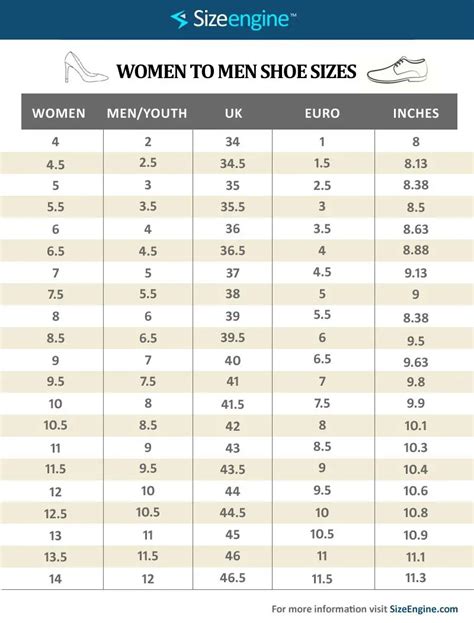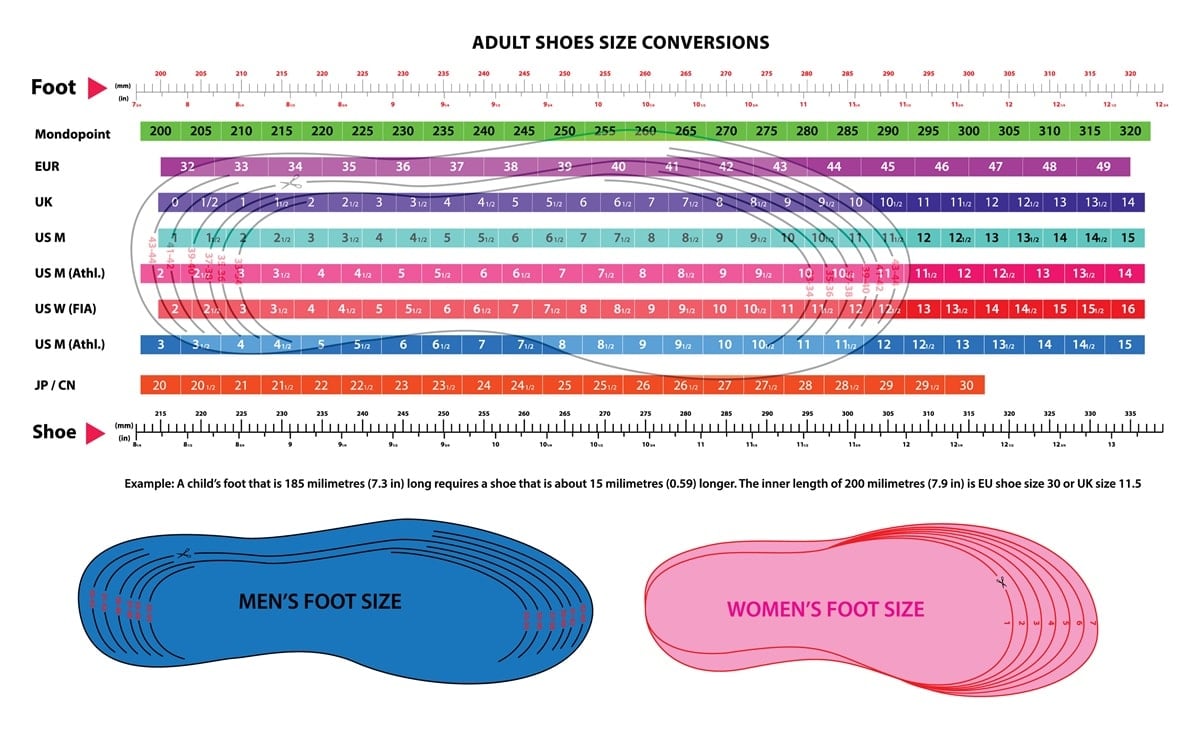5 Shoe Size Differences

When it comes to shoe sizes, the differences can be subtle yet significant, impacting not just the comfort but also the performance and overall fit of the footwear. Understanding these differences is crucial, whether you’re an athlete looking for a competitive edge, a fashion enthusiast seeking the perfect look, or simply someone wanting to ensure their shoes are as comfortable as possible. Here, we’ll delve into five key shoe size differences, exploring their implications and how to navigate them for the best fit.
1. Length vs. Width: The Basics of Fit
One of the most fundamental differences in shoe sizing is between length and width. Shoe length refers to the measurement from the heel to the toe, while width pertains to how narrow or wide the shoe is. Most people are aware of their shoe length but often overlook the importance of width. A shoe that fits perfectly in length but is too narrow or too wide can lead to discomfort, blisters, and even long-term foot health issues. Many shoe brands offer widths such as narrow, regular, wide, and extra-wide to cater to different foot shapes.
2. Men’s vs. Women’s Shoe Sizes: More Than Just Sizing
Men’s and women’s shoe sizes are another critical area of difference. While it might seem straightforward, the distinction goes beyond just sizing. Men’s shoes tend to be wider and have a more substantial sole, reflecting general differences in foot shape and size between the genders. Women’s shoes, on the other hand, are typically narrower and might have a higher heel-to-toe drop, accommodating the average woman’s foot shape and common design preferences. Understanding these differences is essential for finding the right fit, especially for those who might not fit the traditional mold of their gender’s shoe designs.
3. International Size Variations: Navigating Global Standards
Shoe sizes are not standardized worldwide, which can be confusing for international shoppers. For instance, a size 8 in the US is equivalent to a size 39 in Europe and a 25 cm in Japan. Knowing these conversions is vital for online shopping across borders, ensuring that the shoes fit perfectly without the need for returns or exchanges. Many brands now provide size charts that include international conversions, but it’s also helpful to have a basic understanding of how sizes translate between different countries.
4. Seasonal and Activity-Specific Sizes: Finding the Right Fit for Every Occasion
The fit required for shoes can vary significantly depending on the season and the specific activity. For example, winter boots might be sized slightly larger to accommodate thick socks, while running shoes need a snug fit to prevent blisters during long runs. Similarly, fashion shoes for special occasions might prioritize style over comfort, necessitating a different approach to sizing. Understanding these nuances can help in selecting the right shoe for the right purpose, ensuring both comfort and performance.
5. Branding Differences: The Unique Fit of Each Brand
Lastly, different shoe brands often have unique sizing standards. This means that a size 10 in one brand might fit differently in another. Some brands cater specifically to certain foot shapes or preferences, such as New Balance offering a wide range of widths. It’s common for shoppers to find that they are a different size in different brands, and sometimes even within different models from the same brand. This variability underscores the importance of trying shoes on whenever possible and being open to adjusting one’s size expectations based on the brand and model.
Conclusion:
In conclusion, the world of shoe sizes is more complex than it initially seems. From the basic distinctions between length and width to the more nuanced differences between brands and activities, understanding these variations is key to finding the perfect fit. Whether you’re a seasoned shoe enthusiast or just starting to explore the world of footwear, recognizing and adapting to these differences can elevate your shoe game, providing comfort, support, and style for every occasion.
Frequently Asked Questions:
How do I determine my correct shoe size?
+To determine your correct shoe size, it’s best to get your feet measured at a shoe store. If shopping online, refer to the brand’s size chart and consider factors like the material of the shoe and whether you plan to wear thick socks.
Why do different brands have different sizing standards?
+Different brands have different sizing standards because they cater to different foot shapes, materials, and intended uses for their shoes. This variability allows brands to offer a better fit for a wider range of customers.
How can I ensure the best fit when buying shoes online?
+To ensure the best fit when buying shoes online, check the brand’s size chart, read reviews from other customers to gauge sizing accuracy, and look for a flexible return policy in case the shoes don’t fit as expected.
What’s the importance of considering the width of a shoe?
+Considering the width of a shoe is crucial for comfort and to prevent potential health issues. A shoe that’s too narrow can cause pressure and blisters, while one that’s too wide can lead to slipping and lack of support.
Can shoe sizes change over time?
+Yes, shoe sizes can change over time due to factors like weight gain or loss, pregnancy, and aging, which can cause feet to flatten and lengthen. It’s a good idea to have your feet remeasured periodically to ensure you’re wearing the right size.



